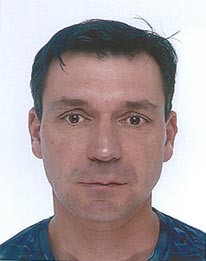
On March 29, We have the pleasure to welcome Stéphane MANGIN from Institut Jean Lamour, Université de Lorraine.
He comes at Grenoble for the PHD defense of Jyotirmoy Chatterjee at 14H. He kindly offered to take this opportunity to give us a seminar which will take place at SPINTEC room 434A at 11:00
Since the first observation of ultrafast demagnetization in Ni thin films using femto-second laser by Beaurepaire et al. 20 years ago [1], understanding the mechanism behind ultra-fast magnetization dynamic became a topic of huge interest. The new possibility of using short light or electron pulses to manipulate magnetization attracts a lot of attention also because of the potential application in the field of magnetic information, memory and storage technologies. magnetic data storage and memories.
During the presentation I will focus on the new results obtained during the last ten years. Indeed in 2007, an intriguing discovery related to ultrafast demagnetization was the observation of all-optical switching of magnetization in ferrimagnetic GdFeCo alloy films using femtosecond laser pulses [2]. Later, heat driven Helicity-independent AOS in the GdFeCo system was reported. [3] The switching mechanism was attributed to the transient ferromagnetic coupling between Gd sublattic and FeCo sublattice. [4]. it was also believed that AOS is a special phenomenon limited to ferrimagnetic rare-earth transition metal alloy, but it was shown in 2014 that AOS is a much more general phenomenon with a wide range of choices of materials. [5,6,7]. Indeed deterministic Helicity Dependent All-Optical Switching (HD-AOS) without any applied magnetic field has been reported for different materials such as ferrimagnetic and ferromagnetic thin films and granular recording media.
In all the previous reported experiments light is used to manipulate magnetization. However, recently we have engineered multilayer structures such as Pt/ Cu ( t) / [Co/Pt] in order to create hot electrons femto second pulses. By shining light on the Pt layer, hot electrons are being created. They will travel into the Cu before interacting with the [Co/Pt] magnetization . We demonstrated that hot electrons alone can very efficiently induce ultrafast demagnetization [8]. Simulations based on hot electron ballistic transport implemented within a microscopic model that accounts for local dissipation of angular momentum nicely reproduce the experimental results, ruling out contribution of pure thermal transport. More over by replacing the [Co/Pt] layer by a GdFeCo layer we can switch the GdFeCo magnetization using a femto-second hot electron pulse with no ditrect light ionteraction [9] which confirm the work from Wilson et al [10]. Indeedthey reported the switching of GdFeCo/Au bilayer via hot electrons generated by single pulse femtosecond laser.
[1] E. Beaurepaire, J.-C. Merle, A. Daunois, and J.-Y. Bigot, Phys. Rev. Lett. 76, 4250 (1996).
[2] C. D. Stanciu, et al, Phys. Rev. Lett. 99, 047601 (2007).
[3]T. A. Ostler, etal Nat. Commun. 3, 666 (2012).
[4] I. Radu, et al Nature 472, 205 (2011).
[5] S. Alebrand, et al Appl. Phys. Lett. 101, 162408 (2012)
[6] S. Mangin, et al Nat. Mater. 13, 286 (2014).
[7] C.-H. Lambert, et al , Science 1253493 (2014).
[12] N. Bergeard, et al Phys. Rev. Lett 117 14 147203 (2016)
[13] Y. Xu, et al Adv Mat (2017)
[14] R. B. Wilson, et al Physical Review B 95 (18), 180409




